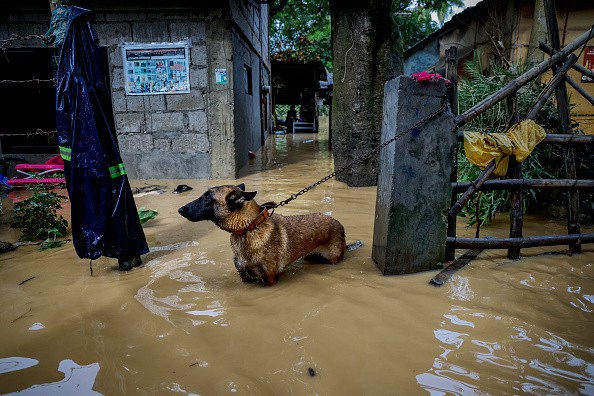Typhoon Noru (locally known as Typhoon Karding) unleashed heavy rains in the Philippines, causing evacuations and suspension of classes and government offices.
According to CNN News, the Typhoon intensified from Saturday to Sunday, reaching the Philippines with 240 kilometers per hour maximum sustained winds.
The Philippines is vulnerable to storms and with an archipelago of over 7,000 islands.
Moreover, classes and government offices on Monday (PST) were suspended because of the threat of the Typhoon, while businesses were temporarily closed.
International to local flights and ferry services were also affected and canceled.
The Typhoon is moving west-northwestward away from Luzon, leaving the Philippines tonight as it moves towards Vietnam.
Furthermore, the Typhoon is expected to re-intensify as it moves over the West Philippine Sea.
According to the state weather agency, Philippine Atmospheric, Geophysical and Astronomical Services Administration (PAGASA), the country will experience light to moderate rainfalls.
PAGASA said that the Typhoon, as of 10:00 a.m (PST), has an intensity of 130 km/h maximum sustained winds near the center, with gustiness up to 160 km/h.
The state weather agency revealed affected areas experiencing light to moderate rains with potential flooding and landslides: central and western parts of Pangasinan, the west portion of Tarlac, Zambales, and Northwestern parts of Pampanga.
The advisory noted that the Typhoon could still unleash occasional monsoon rains over the 24 hours in Central Luzon and Southern Luzon.
Areas in Palawan, including Quezon and Rizal, will experience threatening flooding in low-lying areas and potential landslides in mountainous portions.
On the other hand, Northern Occidental Mindoro will feel light to moderate heavy rains, which will continue for two to three hours.
Moreover, PAGASA announced that a Marine Gale Warning is still in effect over the western seaboard of Northern and Central Luzon.
It also added that the Southwest Monsoon could cause moderate to rough seas, 1.5 to 3.0m in the western seaboards of Southern Luzon, Visayas, and Mindanao, noting travel risks for small boats.
Typhoon Aftermath

BBC News reported that five rescuer died from the Typhoon.
The report said that philippine President Ferdinand Marcos ordered immediate assistance with supplies and disaster equipment to communities to be airlifted.
Moreover, Marcos advised the energy department to stand on high alert for possible affected energy industries.
In the News, BBC said that over 74,000 people were evacuated because of the threat of a Typhoon.
Safety Tips
Safety is essential as the Typhoon left flooding, downed trees, and affected communities.
- If you obtain injuries from the typhoon, seek the nearest health care facilities or healthy volunteers.
- Also, if your family member requires medications, it is important to inform the nearest barangay or health care facilities or go to hospitals.
- Be updated with the weather updates from the local officials and forecasts.
- Return to your house or area only when it is considered safe or when flooding finally subsides. Avoid traveling to places that are reportedly closed or damaged by the Typhoon.
- Be careful with debris from the aftermath of the typhoon.
For more similar stories, don't forget to follow Nature World News.
© 2025 NatureWorldNews.com All rights reserved. Do not reproduce without permission.





